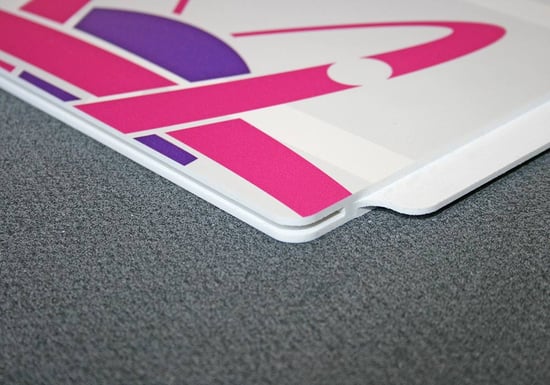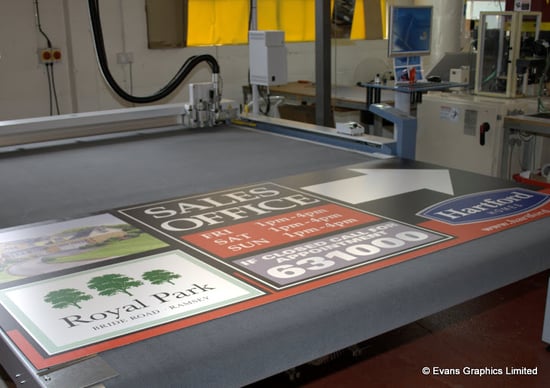Dibond and Foamex are both renowned for being excellent substrates to print onto, making them suitable for a wide range of products in a variety of environments. Despite the undoubted similarities in performance there are some key differences to be aware of when deciding on which material to use.
DIBOND

Dibond is the pricier of the two, but you get a premium finish and higher durability for the extra investment. It is comprised of two 0.3mm aluminium sheets sandwiching a polyethylene core of between 5mm and 10mm thicknesses, depending on the product.
The aluminium sheet provides a superior surface finish that is totally flat and excellent for printing on, preserving the design for longer. It is available in several finishes which also highlight the better quality of material – brushed aluminium, bronzed and painted.
Dibond is highly resistant to the environment and weather conditions, being weather, water and rust proof and it will not react to temperatures as low as -50C and high as 80C. It remains in top condition for longer and the design will fail before the material itself does.
The aluminium keeps the board light, and by using a polyethylene core keeps it at half the weight of what full aluminium sheeting would be – with no compromise on the strength, meaning it won’t warp and resists flexing against the wind.
When combined with durable inks that also resist weather damage, it makes Dibond highly suitable for outdoor use and permanent signage. It's a versatile material. Shopfronts, shop fittings and exterior signs are all ideal uses for this substrate, but it can also be used in less demanding roles if a more premium look is desired. Exhibition booths, product displays and trade fairs can be made to look of a higher quality by using Dibond.
Whereas both Dibond and Foamex can be bent and folded to create displays and other fabrications, an advantage Dibond has is that it can be rolled to produce sweeping curved sheets, adding a touch of elegance to a design. Dibond shaping - as it is more commonly known - is something Evans Graphics specialise in.
FOAMEX

Foamex board is the more cost effective option, but no less of a material for it. It is reliable and takes ink very well with direct printing.
Despite being termed as foam it isn’t soft. Made entirely from PVC it’s completely rigid with smooth layers either side of the compressed foam core. It’s available in a wider variety of thicknesses and can be cut to size. Sheets can in fact be significantly larger than Dibond.
It's lighter weight is one of its big advantages, allowing products to be easily mounted to surfaces with as little as Velcro, depending on the size and thickness being used. This makes foamex highly suitable for both permanent and temporary installations.
Exhibition booths, conference branding and promotional events are all excellent uses of Foamex, where the lightweight but durable nature of the material provides a quality looking product combined with mobility. Equally, foam printed signs in offices and stores benefit from its professional appearance while being economic.
Displaying almost as much resistance to the weather as Dibond, it is more than capable of being used outdoors too. It is weather and water proof, but is more sensitive to heat than Dibond and will expand and contract as a result. This also makes foamex more susceptible to warping, which is something to consider when fixing it to surfaces.
ON BALANCE
Closely matched as they are in actually taking a printed design, their differences are instead highlighted by their physical characteristics. They both provide an excellent finish and wherever they are displayed the finished product will look professional and of a high quality.
The higher resistance to temperature and more durable nature of Dibond pushes it towards more outdoor applications, unless a premium quality finish is desired in an indoor setting.
Foamex board benefits greatly from its lighter weight, making it easy to install and move, which compliments its economic pricing to open up more temporary and mobile applications for its use.
Whichever you choose, both materials make outstanding quality signage and displays.



